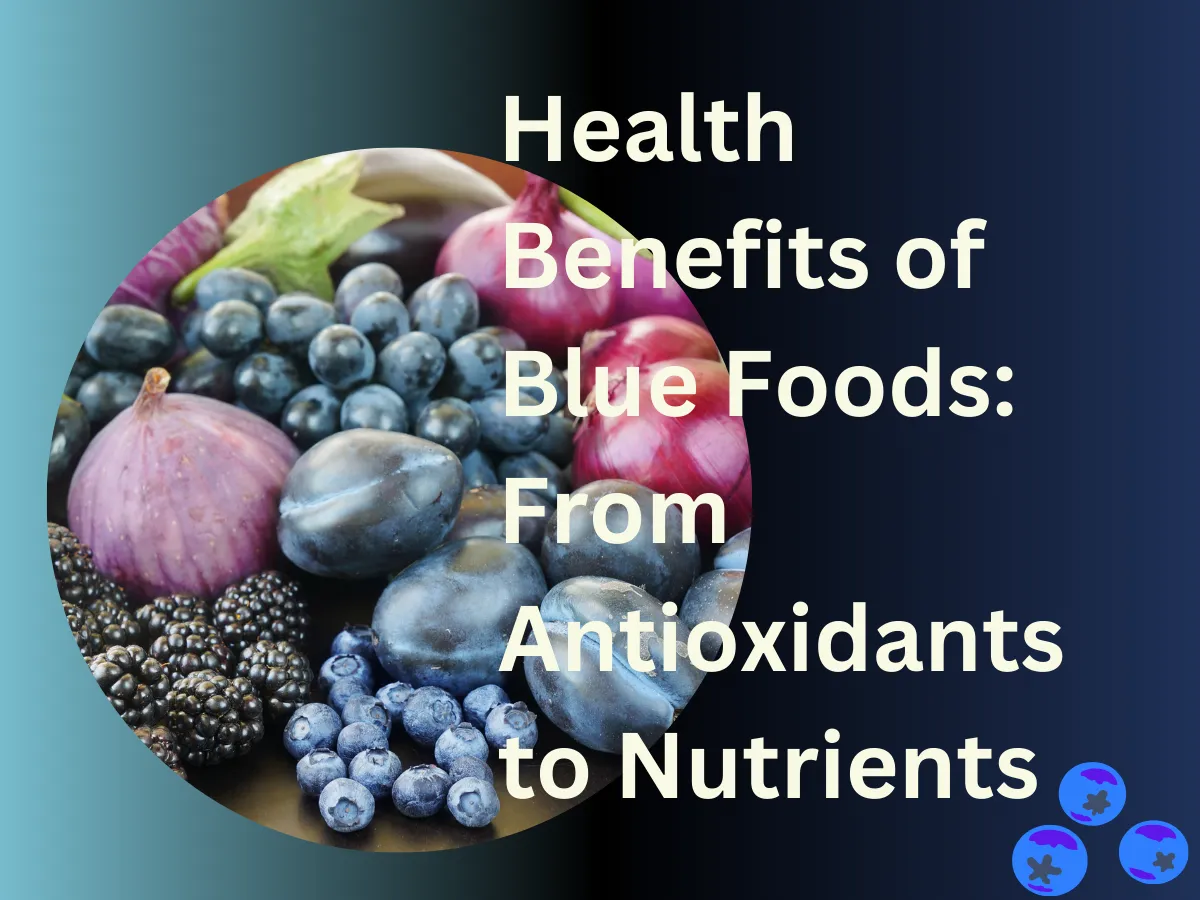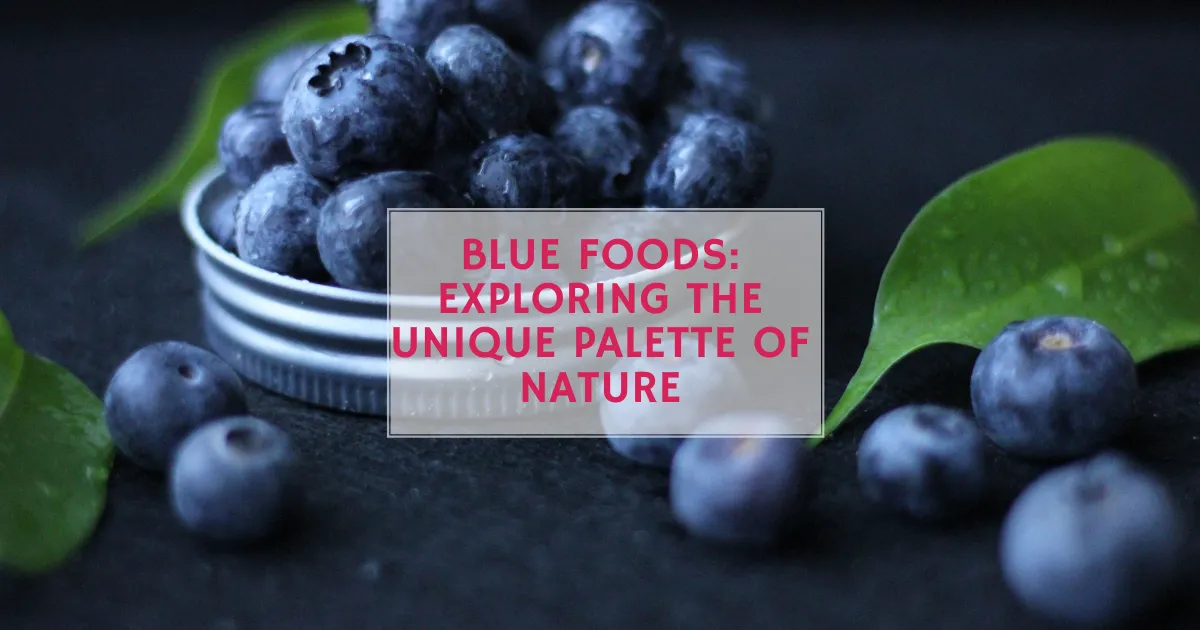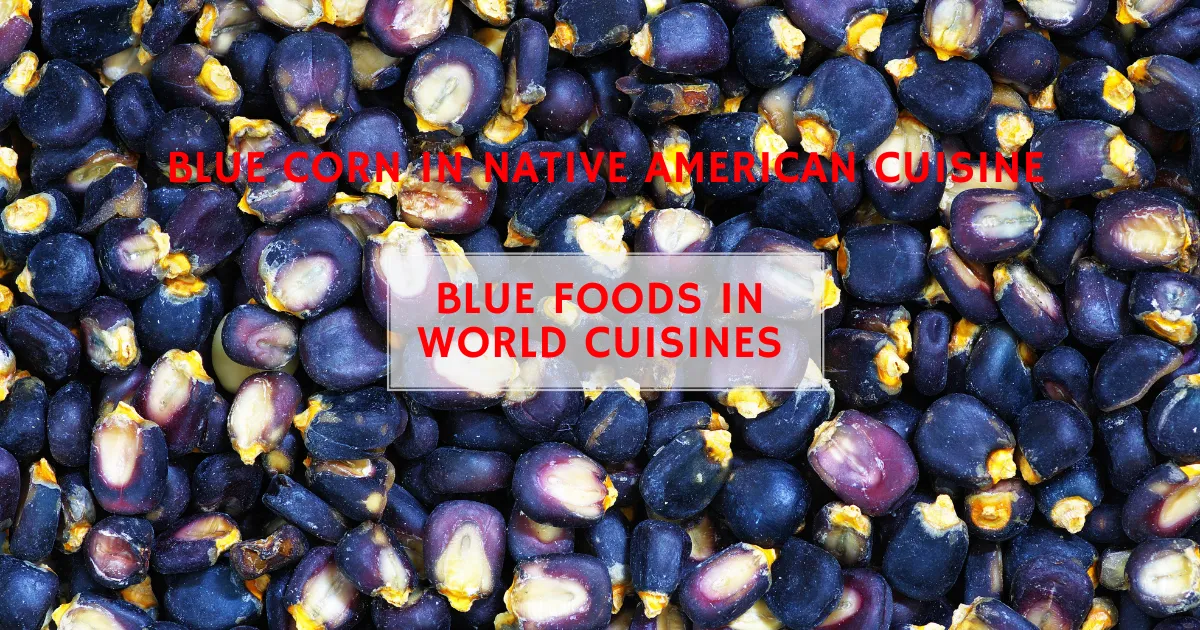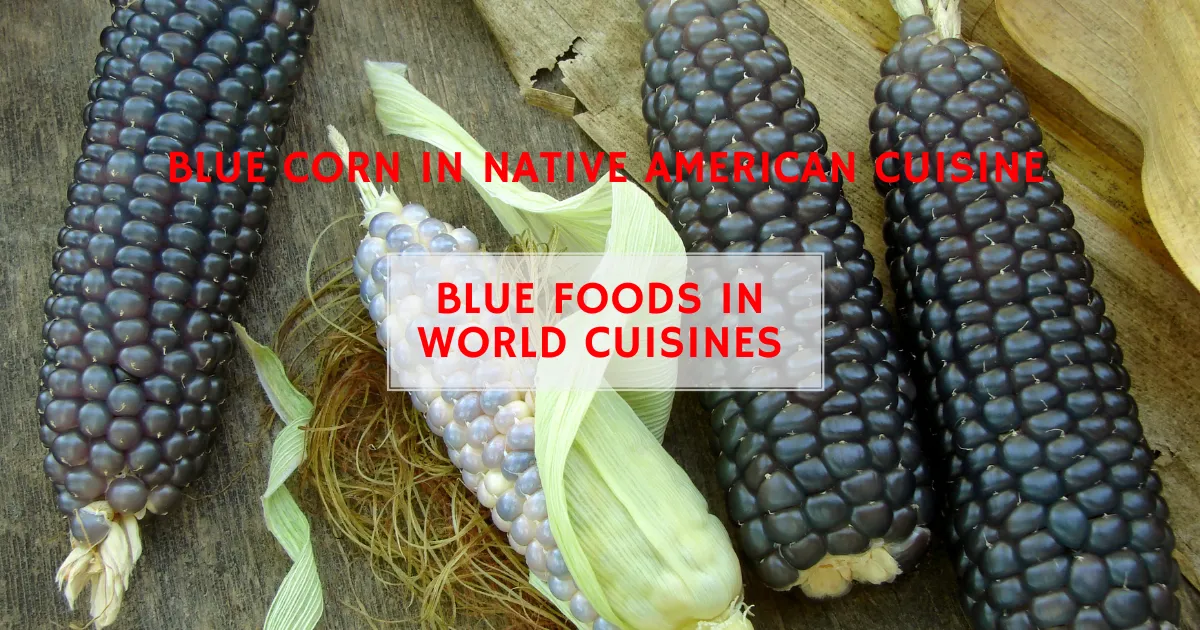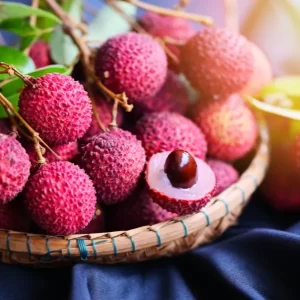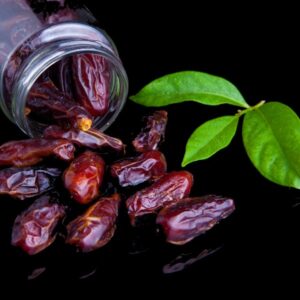Last updated on August 17th, 2025 at 08:02 am
The Magic Behind Blue Superfoods for Wellness: Blue foods are a fascinating and unique category in the culinary world. They stand out because blue is a rare color in the natural world, especially in food. Let’s explore the world of blue foods, including their science, types, cultural significance, and more.
What Makes Blue Foods So Exciting and Unique?”
What Are Blue Foods and Why Are They Unique? Blue foods are those that exhibit a predominantly blue color. What makes them unique is the scarcity of naturally blue foods in nature. Blue is less prevalent in edible plants and animals than red, green, or yellow colors. This rarity makes blue foods intriguing and visually striking.
The Science Behind Blue Color in Foods: Natural vs. Artificial Blue color can be achieved naturally and artificially. Natural blue foods often contain pigments called anthocyanins. These compounds are found in blueberries, blackberries, and purple cabbage, giving them their blueish hue. Artificial blue colorants, on the other hand, are synthetic additives used in processed foods, candies, and beverages to create a vibrant blue shade.
Blue Fruits and Vegetables: Common Types and Health Benefits – Blue Superfoods Natural blue fruits and vegetables include blueberries, blackberries, purple potatoes, and purple cabbage. Blueberries, for instance, are packed with antioxidants, fiber, and vitamins, making them nutritious. They are known for their potential benefits for brain health and for reducing the risk of chronic diseases.
Blue Seafood: Blue-Colored Seafood Options Blue-colored seafood is rare, but some exceptions exist. Bluefin tuna, for instance, can appear bluish when raw due to its muscle structure and diet. However, when cooked, it turns brown. While blue-colored seafood is not joint, other seafood like salmon and trout offer a rich source of healthy omega-3 fatty acids.
Blue Desserts and Beverages: Popular Choices and Ingredients Blue desserts and beverages often get their color from food coloring. Blue velvet cake, blue raspberry ice cream, and blue cocktails are famous examples. Ingredients like blue curaçao liqueur, blue spirulina, and natural butterfly pea flower extract achieve vibrant blue hues.
Blue Food Trends: Recent Innovations Recent food trends have emerged, such as naturally blue foods like blue algae-based products, which are considered superfoods for their health benefits. Additionally, plant-based blue dyes derived from sources like spirulina are gaining popularity as alternatives to artificial colorants.
Blue Food in History and Culture Blue foods have historical and cultural significance. For example, blue corn has been a staple in Native American cuisine for centuries. In some cultures, blue foods are used in traditional dishes or celebrations. In Mexican cuisine, blue corn masa makes tortillas and tamales.
Blue Food Symbolism and Art The color blue is often associated with calmness, serenity, and spirituality in various cultures. In art and media, blue foods have been depicted in surreal or dreamlike contexts, conveying a sense of wonder and mystery. Blue food imagery can evoke emotions and creativity in storytelling and advertising.
In summary, blue foods are a captivating realm of culinary exploration, offering a mix of science, culture, and creativity. Whether savoring the health benefits of blueberries or enjoying the visual appeal of blue desserts, these foods add a unique dimension to our culinary experiences.
Cultural Significance of Blue Foods: A Global Perspective
The cultural significance of blue foods varies across different regions and communities worldwide. Blue foods hold a special place in the culinary traditions of various cultures, often symbolizing different meanings or playing significant roles in local cuisines and rituals.
Here’s a closer look at the cultural significance of blue foods from a global perspective:
How Blue Foods Promote Relaxation and Balance
Blue foods, mainly blue fruits, can offer various health benefits, primarily due to their high antioxidant content. Antioxidants help protect cells from damage caused by free radicals and unstable molecules that can lead to multiple health issues, including chronic diseases.
Here’s why blue foods are good for you and a list of antioxidant-rich blue fruits:
Why Blue Foods Are Good for You:
Rich in Antioxidants: Blue foods are packed with antioxidants, such as anthocyanins and flavonoids. These compounds have been linked to reducing the risk of chronic diseases like heart disease, diabetes, and cancer.
Anti-Inflammatory: Many blue foods have anti-inflammatory properties, which can help alleviate inflammation-related conditions like arthritis and inflammatory bowel disease.
Brain Health: Some blue foods, like blueberries, are known for their potential cognitive benefits. They may improve memory and cognitive function, especially as you age.
Heart Health: Antioxidants in blue foods can support heart health by reducing blood pressure and improving cholesterol levels.
Digestive Health: Blue foods that are high in fiber, such as blueberries, can aid digestion and promote a healthy gut.
List of Antioxidant-Rich Blue Fruits:
Blueberries: Blueberries are one of the most well-known antioxidant-rich fruits. They are packed with anthocyanins, vitamin C, and fiber. Blueberries have been associated with improved brain function and reduced oxidative stress.
Blackberries: Blackberries are another berry variety that contains antioxidants and vitamin C. They can contribute to overall health and may support skin health due to their vitamin E content.
Acai Berries: Acai berries are known for their deep purple-blue color and are rich in antioxidants. They are believed to have numerous health benefits, including boosting energy and supporting heart health.
Elderberries: Elderberries are used in traditional medicine for their potential immune-boosting properties. They are high in vitamin C and antioxidants.
- Haskap Berries: Also known as honeyberries, haskap berries are rich in anthocyanins and vitamin C. They have a sweet-tart flavor and are becoming more popular for their potential health benefits.
Blue Spirulina (Blue-Green Algae): A Nutritional Powerhouse
Blue-green algae, often referred to as spirulina, is a type of cyanobacteria that has been consumed for centuries. It’s a popular dietary supplement due to its impressive nutritional profile.
Nutritional Benefits of Blue-Green Algae
- Protein-Packed: Blue-green algae is a complete protein source, containing all nine essential amino acids.
- Rich in Vitamins and Minerals: It’s a good source of vitamins B12, B6, and E, as well as minerals like iron, magnesium, and zinc.
- Antioxidant Properties: Blue-green algae contains antioxidants that can help protect cells from damage caused by free radicals.
- Supports Immune Function: It may help boost the immune system.
- Promotes Digestive Health: Blue-green algae can help improve digestion and gut health.
How to Incorporate Blue-Green Algae into Your Diet
- Powdered Form: This is the most common form of blue-green algae. You can add it to smoothies, juices, or water.
- Tablet Form: Blue-green algae is also available in tablet form, making it easy to consume.
- As an Ingredient in Food Products, Some manufacturers incorporate blue-green algae into energy bars, protein powders, and health drinks.
